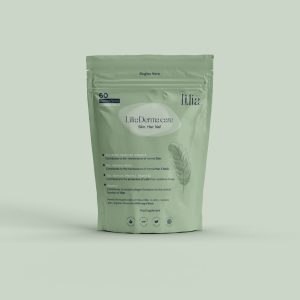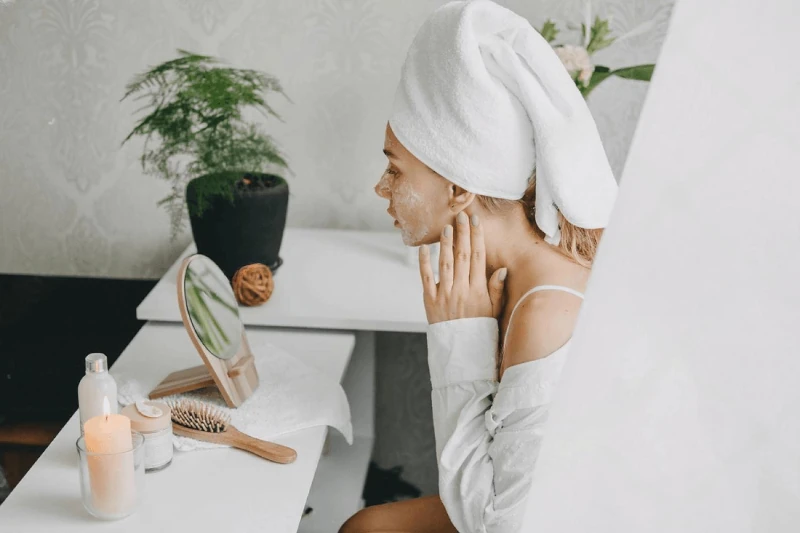جدول محتواها
How to take care of your skin at home is a question that many people ask, especially as skincare routines have become increasingly popular. With countless products and tips available, it can be overwhelming to know where to start.
This guide aims to simplify the process by providing essential information on creating a personalized skincare routine that suits your unique needs. From understanding your skin type to choosing the right products, we’ll cover everything you need to know to achieve healthy, glowing skin.
Why Home Skin Care Matters
How to take care of your skin at home is more than just a beauty routine; it’s an investment in your overall well-being. A consistent skincare regimen can help prevent premature aging, reduce the appearance of fine lines and wrinkles, and improve skin texture.
By understanding your skin’s unique needs and incorporating simple yet effective practices into your daily life, you can achieve a healthier, more radiant complexion. Moreover, taking care of your skin at home can be a relaxing and self-care practice, helping to reduce stress and promote a sense of calm.
Understanding Your Skin Type
Before diving into how to take care of your skin at home, it’s crucial to understand your skin type. Knowing your skin type is the foundation of any effective skincare routine. There are four primary skin types: dry, oily, combination, and sensitive.
Dry skin often feels tight and flaky, while oily skin tends to be shiny and prone to breakouts. Combination skin exhibits both dry and oily characteristics in different areas of the face, and sensitive skin reacts easily to products and environmental factors.
Once you’ve identified your skin type, you can select products that are specifically formulated to address your unique needs. For instance, if you have dry skin, you’ll want to look for moisturizers that are rich and hydrating.
On the other hand, if you have oily skin, you may benefit from oil-free products and gentle cleansers. By tailoring your skincare routine to your skin type, you can maximize the benefits of your products and achieve healthier, more radiant skin.
Essential Steps for a Skincare Routine
Cleansing
Cleansing is the cornerstone of how to take care of your skin at home. It involves removing dirt, oil, and makeup that can clog pores and lead to breakouts. Choose a cleanser that is gentle enough for your skin type and use it twice daily, morning and night.
Moisturizing
Moisturizing is essential for maintaining a healthy skin barrier. Look for a moisturizer that is specifically formulated for your skin type. Apply moisturizer immediately after cleansing to seal in hydration.
Sunscreen
Sunscreen is your skin’s best defense against harmful UV rays. Regardless of the weather, apply a broad-spectrum sunscreen with an SPF of 30 or higher every day. Sunscreen helps prevent premature aging, sunburns, and skin cancer.
Additional Tips for Healthy Skin

Diet and Hydration
What you eat can significantly impact your skin’s health. Incorporating plenty of fruits, vegetables, and whole grains into your diet provides essential vitamins, minerals, and antioxidants that nourish your skin from within. Additionally, staying hydrated by drinking plenty of water helps to flush out toxins and keep your skin looking plump and supple.
Sleep
Getting enough quality sleep is crucial for overall health, including your skin. During sleep, your body repairs itself, and your skin cells regenerate. Aim for 7-9 hours of sleep each night to promote a healthy complexion.
Stress Management
Stress can wreak havoc on your skin, leading to breakouts and premature aging. Incorporate stress-reducing activities into your daily routine, such as meditation, yoga, or spending time in nature. These practices can help calm your mind and improve your skin’s appearance.
Limit Alcohol and Smoking
Excessive alcohol consumption and smoking can dehydrate your skin and accelerate the aging process. To maintain healthy skin, it’s best to limit your intake of alcohol and avoid smoking altogether.
Gentle Cleansing
While cleansing is an essential part of how to take care of your skin at home, it’s important to be gentle. Over-cleansing can strip your skin of its natural oils and lead to dryness and irritation. Choose a gentle cleanser and avoid scrubbing your skin too vigorously.
Source: https://www.remodelingtop.com/how-to-improve-skin-at-home/
Reveal Your Radiance with Lilia Derma Care

Lilia Derma Care is a health supplement designed to support the health and beauty of your skin, hair, and nails. It is formulated with a unique combination of key ingredients, including silica, PABA, CoQ10, L-Cysteine, L-Arginine, and biotin. These ingredients may help to maintain normal skin, promote hair growth and strengthen nails, and protect cells from oxidative stress
Creating a Personalized Skincare Routine
1: Consultation with a Dermatologist: Before diving deep into how to take care of your skin at home, consider consulting with a dermatologist. They can provide personalized advice based on your specific skin concerns and recommend products that are tailored to your needs.
2: Patch Testing: When introducing new products into your skincare routine, it’s essential to patch test them on a small area of your skin first. This can help you identify any potential allergies or irritations.
3: Consistency is Key: Consistency is crucial when it comes to how to take care of your skin at home. Make skincare a daily habit and stick to your routine. Results may take time, but with consistent effort, you’ll see improvements in your skin’s overall health and appearance.
4: Listen to Your Skin: Pay attention to how your skin reacts to different products and adjust your routine accordingly. If a product causes irritation or breakouts, discontinue use and consult with a dermatologist.
Conclusion
By following these simple yet effective steps outlined in how to take care of your skin at home, you can achieve a healthier, more radiant complexion. Remember, consistency is key. Incorporate these practices into your daily routine, and you’ll be well on your way to having the skin you’ve always desired.
FAQs
How often should I wash my face?
It’s generally recommended to wash your face twice a day, morning and night. However, if you have oily skin or have been sweating excessively, you may need to wash more frequently.
What’s the difference between a toner and a moisturizer?
Toners help to balance your skin’s pH levels and remove any remaining impurities after cleansing. Moisturizers, on the other hand, hydrate your skin and create a protective barrier.
Can I use the same skincare products for my entire body?
While some products can be used on both your face and body, facial skin is more delicate and often requires specialized products. It’s best to use separate products for your face and body.
How long does it take to see results from a new skincare routine?
The time it takes to see results varies depending on the individual and the specific concerns being addressed. Generally, you may start to notice improvements within a few weeks.
Can I use natural ingredients for my skincare routine?
Yes, many natural ingredients can be beneficial for your skin. However, it’s important to patch test any new natural ingredient before applying it to a larger area of your skin to avoid potential allergic reactions.







